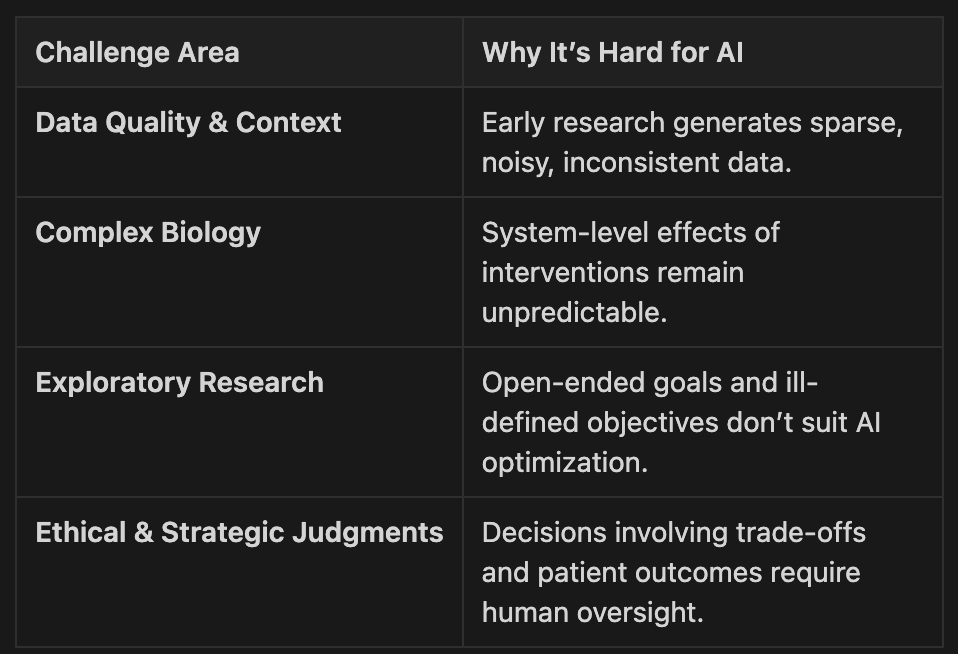AI in Drug Discovery
In early stage drug development, much of the work involves identifying biological targets, designing molecules, and validating assays. We will review where AI excels today, where some of the opportunities may be, and where human creativity and judgment are still essential.
Roles Using AI Heavily
Computational chemists/medicinal chemists: Design and optimize drug-like molecules, screen vast chemical libraries
Current AI usage: Virtual screening, generative molecule design, predicting binding affinities, and ADMET properties
Structural biologists/bioinformaticians: Predict and analyze 3D protein structures and interactions with ligands
Current AI usage: AlphaFold and RoseTTAFold have revolutionized structure prediction
Genomics & transcriptomics scientists: Analyze genetic and transcriptomic data to identify disease mechanisms and biomarkers
Current AI usage: Machine learning is used for clustering, variant effect prediction, and multi-omics integration
Target discovery & validation teams: Prioritize and validate disease-relevant targets using available evidence
Current AI usage: Data mining of literature, omics, and clinical datasets to rank targets

